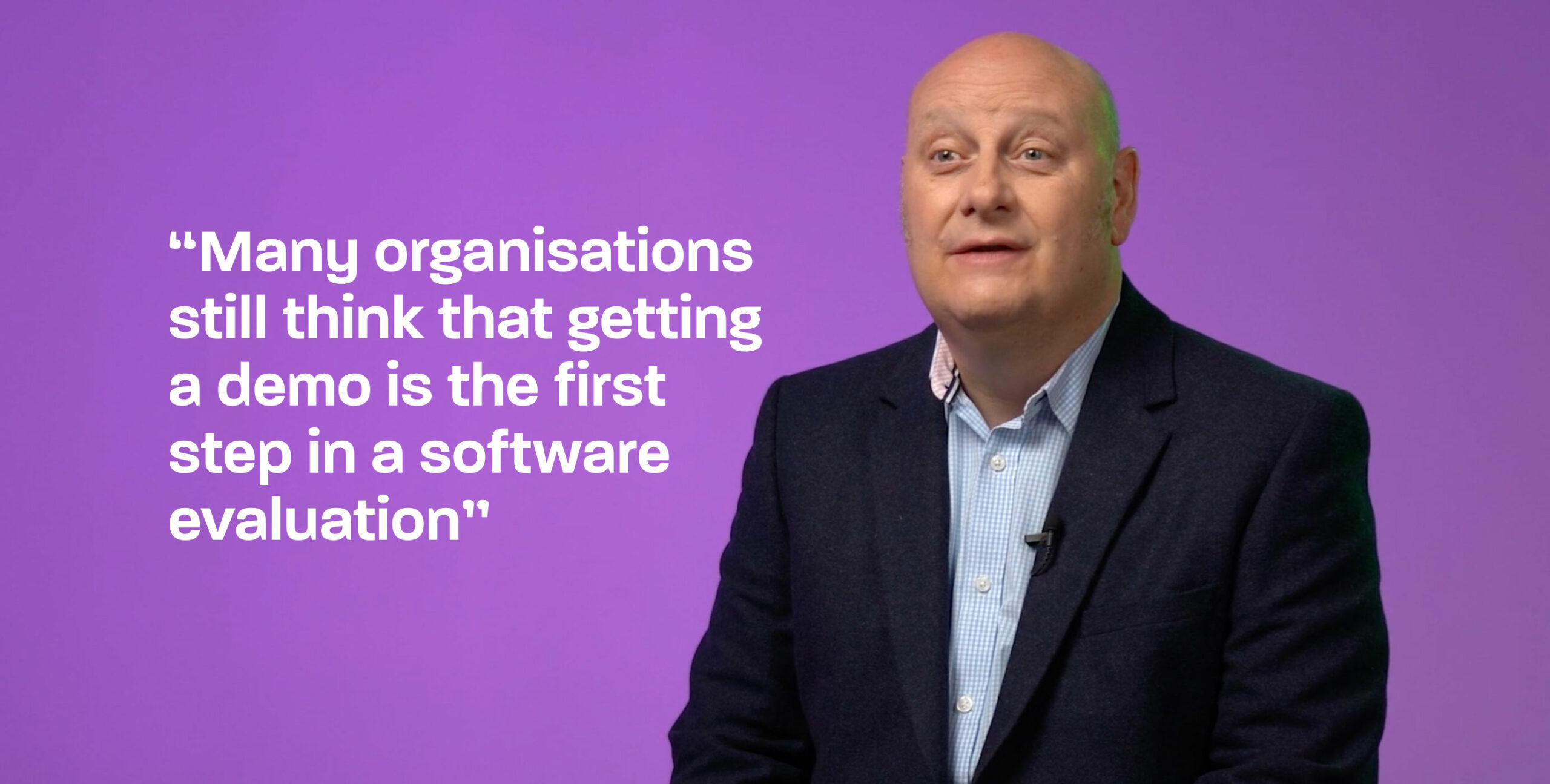Ok. I know it sounds like a rather odd title for a blog post from a software services company. Maybe it should really be called, “I’m not going to give you a demo … yet.” Let me explain.
The low-value demo
Fifteen years ago, I started selling Microsoft Dynamics solutions. When we engaged with a prospective customer, we were invariably asked to do a demo as a first step. Desk to desk videoconferencing was not that common in those days, so we tended to comply by despatching a small team down to the client for the exercise. Even back then, we would prefer to customise the demo in some way, to make it more relevant. We knew that showing a UK insurance broker a demo about selling bicycles in North America, wasn’t going to be terribly compelling. Yet it was always surprising how few companies really engaged in giving us the information that we needed to tailor the demo.
Have things changed? Yes. But not particularly for the better. Many organisations still think that getting a demo is the first step in a software evaluation. What has changed is that three minutes on your search engine of choice will uncover videos covering exactly what we can deliver in a generic demo.
But my broader point is that a software demo is of low value when not underpinned by some well thought-through business objectives. At best, I might get some bullet points of capabilities that the customer wants to see. But I have never in 15 years been presented on day one with a list of business pains that need to be addressed. To completely torture an analogy … I have a bag of tools. You ask me to show you my hammer. Turns out what you really need is to build a nursery, because your baby is due in two months. You get my point.
Demos are bad, ITTs are even worse
Just this week, I received a comprehensive Invitation to Tender (ITT) from a company. The sixty-odd page document was comprehensive, well thought-through and well-written. In this case, the business had already chosen the Microsoft Dynamics suite. But even so, this was the first contact I had had with the business. Given that we hadn’t built any sort of relationship, I suspect they were being a bit coy about the real issues facing the business. How can an organisation be convinced about the supplier of one of the biggest investments they will make, without really being open with each other? Without the trust being hard-earned? They can’t.
So many organisations take this approach. They feel that by distilling an evaluation down to a score, they can make a logical decision. In fact many organisations – particularly in the public sector – are compelled to go down this track. Do we choose our life partners in this way?

A different approach
Your time is valuable. Our time is valuable.
You’re busy. I’m busy. Why don’t we agree from the get-go that after each step in getting to know each other, we’ll take a pause and agree (or not) that this conversation is still good for both of us? Sound reasonable? Good. Let’s do it.
If you want success (and let’s make the assumption that you do), don’t expect us to make all the running. If, as a business, you don’t invest in spending time with us, getting to know us, building that trust, explaining where your business needs to improve, workshopping ideas … we’re really going to struggle to help you. With all due respect, if you’re an executive and you give a task to a mid-ranking employee to ‘go and look at the market for a new ERP system and come back with a recommendation’, we’re not the right partner for you. And by the way, your chances of doing something which really moves the dial for your business are low.

The Catalyst Journey
Having done this for a very long time, I recognised the problems with the ways that organisations chose business applications and suppliers, but couldn’t necessarily put my finger on the right methodology. How could we help businesses be more successful with technology projects? And then, we here at Ardenfort, decided to evaluate Microsoft’s Catalyst approach. It was one of those rare things in business – a lightbulb moment.
So what is Catalyst? It’s a four-step process that starts with envisioning a future state for the organisation and ends with a costed roadmap for an IT solution that will address the business pains. These pains typically fall into the areas of making or saving money, reducing risk or gaining more control and predictability. (Going back to the title of this post, the demo comes in step three!)

Step One is Inspire. In this step, we define the outcomes that the business desires and then undertake an envisioning workshop to imagine a future state for the business.

Step Two is Design. Taking the output from Inspire, we focus on prioritising initiatives for the organisation to reach desired digital transformation goals, quantifying the potential business and technological impact of organisational change. Finally, we align business value goals to technology with a solution roadmap.

Step Three is Empower. This is where we bring the solution to life by producing a highly-tailored demo, based on the Design step. The demo will showcase the desired future state.

Step Four is Achieve. We create a crafted proposal which details how the business can accomplish the changes demonstrated, achieve business objectives and prepare for implementation to drive customer success.
This process offers enormous value to our clients. The key benefit is the bridging of the ‘trust gap’. Most software purchases are still based on generic demos and reference calls. But there is a leap of faith from there to being 100% sure that the business is going to be improved in the ways you need by investing large sums in a new solution. Our Catalyst customers tell us that they feel way more confident to move ahead with a technology project once they’ve been through this process.
In conclusion...
Ask yourself a few questions. Have you bought technology and chosen a supplier using a combination of demos, proposals and reference calls? How did it go? Are you still using the supplier? Most importantly, did the business achieve the transformation it needed?
I hope the answers are positive. But if they aren’t … ?
Would it be worth investing your (and your fellow senior managers’) time in absolutely making sure that the technology investment is going to drive your business to better things? And ditch the demo (as a first step, at any rate)?
If you’re interested in talking to us about a Catalyst exercise, please contact us using this form.



